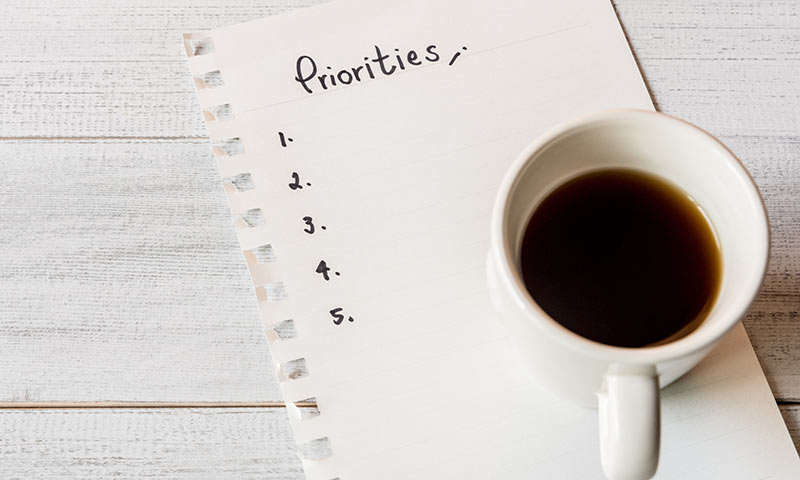If you’re like me, and most other smokers, you’re probably worried that quitting smoking will make you anxious, irritable, depressed, or lower the quality of your life.
Perhaps you’ve been smoking for a long time and don’t know any other way to cope.
So how can you manage your emotions without smoking?
Read on to learn:
- A new way to think about emotions
- 3 ways to better manage your emotions
- How quitting smoking affects your emotions
- A simple way to avoid lashing out after quitting smoking
- How long it takes for your brain to feel normal after you quit
Emotions and Quitting Smoking
Almost all smokers use smoking to cope with their emotions. But does smoking really help you manage and navigate your emotions?
Lighting up a cigarette when you’re angry or stressed only helps you ignore the root cause of that emotion and distract yourself for a moment.
So smoking is not a coping mechanism, it’s a distraction mechanism.
Think about it.
If smoking really relieved stress and depression then smokers would be the most relaxed and the happiest people ever. And of course, that’s not the case.
On the contrary, smoking is a source of mental distress all by itself: having cravings, not feeling in control of your life and your health, feeling self-conscious all the time, missing out on precious moments to smoke, feeling guilty, worrying about the cost.
And quitting smoking decreases anxiety and depression. There is a lot of research that shows quitting smoking decreases anxiety and depression even for people with psychiatric disorders. This is huge!

Your mental health will improve dramatically after you quit smoking. Yes, there will be an adjustment period after you quit as it takes about 3 months for your brain to recover and start regulating dopamine naturally.
So give your brain time to heal.
In the meantime, there’s no reason you can’t enjoy your life and learn new ways to cope and manage your emotions without smoking
How to Manage Your Emotions without Smoking
Managing your emotions doesn’t mean always feeling good. That’s not real or realistic.
Instead, managing your emotions means navigating the different emotions you experience.
Let’s see 3 ways you can start doing that today.
1. Befriend your Emotions
We tend to think that negative emotions are bad experiences that happen to us, and we need to avoid, drown, or suppress them at any cost.
But what if you were to see your emotions as your ally? Something that happens for you, to serve you.

Emotions are neither good nor bad.
Emotions are just signals.
They show you what to pay attention to. When you have a negative emotion it’s a signal that something needs to change.
For example, if you feel guilt, it means that you did or said something that’s not in alignment with your values.
If you’re overwhelmed this is a signal that you need to prioritize. Feeling anxiety is a signal you need to slow down.

If you feel down, this is a signal you need to make some changes in how you see a situation, how you act, or how you talk to yourself.
And of course fear, that’s so prominent in quitting smoking, is just a signal that you need to protect yourself and prepare for something.
For example, if you see a car coming your way you feel fear so you can be alert and prepare to run.
And when you feel fear of failure or fear of the unknown this is a signal you need to prepare for what you’re afraid of.
If you are afraid you won’t be able to cope with stress without smoking this is a signal that you need to learn more about how nicotine affects anxiety and prepare for stressful occasions.
All emotions are just signals, and negative emotions can be useful too.
2. Report Your Emotions, Don’t Act On Them
Many of us fear that quitting smoking will make us irritable, get us in trouble, and even ruin our relationships.
Of course, quitting smoking can’t change your personality or turn you into someone you’re not.
And what gets us in trouble with other people is not the experience of any emotion but our behavior. Being angry doesn’t get us in trouble, the way we express it does.
You may not be able to – and you don’t have to – change the emotion you’re experiencing. But you can change how you show it.
When you catch yourself feeling irritated, acknowledge it and don’t bottle it up.
Keeping anger and irritation inside may cause you to snap at your friends and your loved ones at a later time and then blame quitting smoking for it.
Remember, it’s okay to feel angry whether you’re a smoker or a non-smoker. When you do, take a few deep breaths and report your feelings, don’t act on them.
In other words, don’t show anger with your behavior. Instead, say: I feel that way… This irritates me….
Lashing Out
We usually lash out because we’re not responding to the event that happened, we’re responding to the meaning we give to that event.
We’re responding to the meaning we give to what happened.
We had a member in our CBQ program who was struggling with how he showed his anger, and he was worried that after quitting smoking, his anger would get worse.
And after talking to him, he realized that the reason he got angry was because of how he interpreted things. He took things very personally.
And I think that’s true for most of us when we feel angry. We take things personally.

“He did that… this means I am not valued,” “She did that, it means she didn’t listen to me,” or “She doesn’t care about me and what I want.”
We make it about us and this makes us feel angry.
And even if at times we’re right to take things personally, lashing out never helps.
When you notice you’re feeling irritated, ask yourself:
“Is this about me?”
“What else could this mean?”
…and report your emotions. don’t act on them.
Say, “I feel that way.. this makes me think that …you don’t value me/ you don’t care about me.” This will help you express how you feel and also allow the other person to explain. It’s a win-win!
3. Start Developing Healthy Coping Skills
As we mentioned a few moments ago, smoking is not a coping mechanism it’s a distraction mechanism.
However, if it is the only coping tool you ever used or knew, it’s natural that you’re going to experience a void when it’s gone. So you need to fill that void with healthy coping strategies.
Some examples of healthy coping strategies are a daily 10- minute self-care routine, journaling, or meditation. You need to experiment with different things and see what works best for you.
And if you’re struggling to implement or learn healthy coping skills, asking for help, even professional help, is going to benefit you a lot.
The Best Coping Strategy
My favorite coping strategy is something that helps you take a step back and relax. You can do it anywhere and it’s very simple because it has to do with your breathing.
Our emotions affect our breathing.
For example, how do you breathe when you’re stressed, angry or tense?
Your breathing is shallow, fast, and interrupted.
And how do you breathe when you feel relaxed, relieved, or calm?
Your breathing is deep and slow.
Our emotional state affects our breathing. Same way, we can affect our emotions by changing our breathing.

When you’re stressed your breathing is tense. So as you inhale the first few puffs of a cigarette, your breathing has to change and become deep and slow. Otherwise, you can’t smoke!
So what really happens when you smoke, is that you inhale deeply and slowly. So you feel relaxed thinking the cigarette helped.
But in reality it was the deep and slow breathing that relaxed you. Not the cigarette.
And you can relax without smoking, just by breathing deeply as if you were smoking a cigarette.
Our emotions are a huge smoking trigger and learning how to weaken your triggers and your response to them is part of the third stage of the CBQ Method.
The CBQ Method has 4 stages in total and these 4 stages help you overcome the mental addiction and change how you think and feel about smoking so you can quit easily.
So if you want to start with the CBQ method, make sure you get the foundational video of the CBQ.
In that free video, I show you the 4 stages of the CBQ method, how they work together, and tips to get started with every stage. You’ll get an overview of your quit smoking journey and a PDF starter guide for the CBQ method with tips and notes you can use along your journey.

